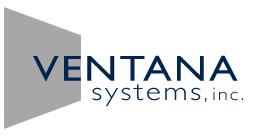True Costs of Outsourcing
When the new CFO of a manufacturing company took his position in early 1996, fellow executives bombarded him with complaints about the cost estimating and accounting departments. Among them was confusion over how much the company saved by outsourcing parts and services. The CFO asked Ventana to join an ad hoc advisory team he was forming to study the problem and recommend changes in the cost estimating processes, organization and methods. Over the next six weeks, Ventana studied the issues with an in-house cost estimating team. In this interval, we built and calibrated two dynamic simulation models to clarify issues and forecast financial results. We helped answer the CFO’s questions and made recommendations on time and on budget. One insight derived from the modeling immediately reframed the company’s strategic vision.
Starting in 1990, the company had began downsizing and outsourcing. Traditional in-house fabrication and subassembly operations were subcontracted or farmed out, and even the detailed design of components was sent out for bid by vendors. The idea was to improve the financial leverage of the company’s capital by retaining only the key aspects of the business: sales, system engineering and final assembly. In doing this, the company was on the leading edge of a management prescription that subsequently became very popular in the 1990s. Superficially, the transformation appeared to work. Internal costs declined, and the pre-subcontract evaluations for outsourced work clearly showed that vendors would produce parts (or subassemblies) for less cost than the company could. The problem was that no one within the company had taken a critical look at the results of the intended transformation.
Ventana began by building a highly aggregated simulation model of company cash flow using four decades of historical financial and operating data. The top-down viewpoint was particularly important because the business was complex. Traditional accounting practices made unambiguous ‘apple-to-apple’ comparisons difficult. Changing accounting rules and cost allocation schemes camouflaged the trends. Ventana wanted to get above the allocations and focus on the bottom line. Perhaps surprisingly, the company possessed copious data, but it had never put together a coherent high level picture. It took four weeks to collect data covering annual operating expense, procurement expense, investment capital spending dollar volume of sales, and total production rate.
When the cost and sales data were put on a constant dollar basis, the picture that emerged was different than the company expected. Instead of seeing unit production cost declining since the transformation, unit costs were going up. In broad terms, operating expenses had fallen about 34% over the five years since the transformation started, but the procurement expense had risen by 55%. Overall, the unit production cost was up about 25%. Moreover, the overall cost trend after the transformation looked roughly the same as before it started. Detailed investigation of new product introduction and extraordinary circumstances failed to account for the higher cost. A careful look at outsourcing evaluations made prior to contract awards, however, revealed some serious flaws. The complexity of the outsourcing issues made the intuitive judgments and conventional wisdom unreliable. Even experienced professionals had trouble separating outsourcing impacts from other changing business phenomena.
Several issues surrounding the business transformation remained unclear, but a persuasive hypothesis is that the company reasoned too superficially in downsizing and outsourcing work. The transformed company could afford to be less skilled in some traditional manufacturing disciplines (where it was quite strong), but it needed more skills in others (where it was weak). In particular, the transformation reduced skill requirements for cash management, manufacturing expertise and detailed design engineering; but it increased them for contract negotiation, vendor coordination, system engineering and cost estimating. The company had not worked to augment its skills in the areas of greater importance.
